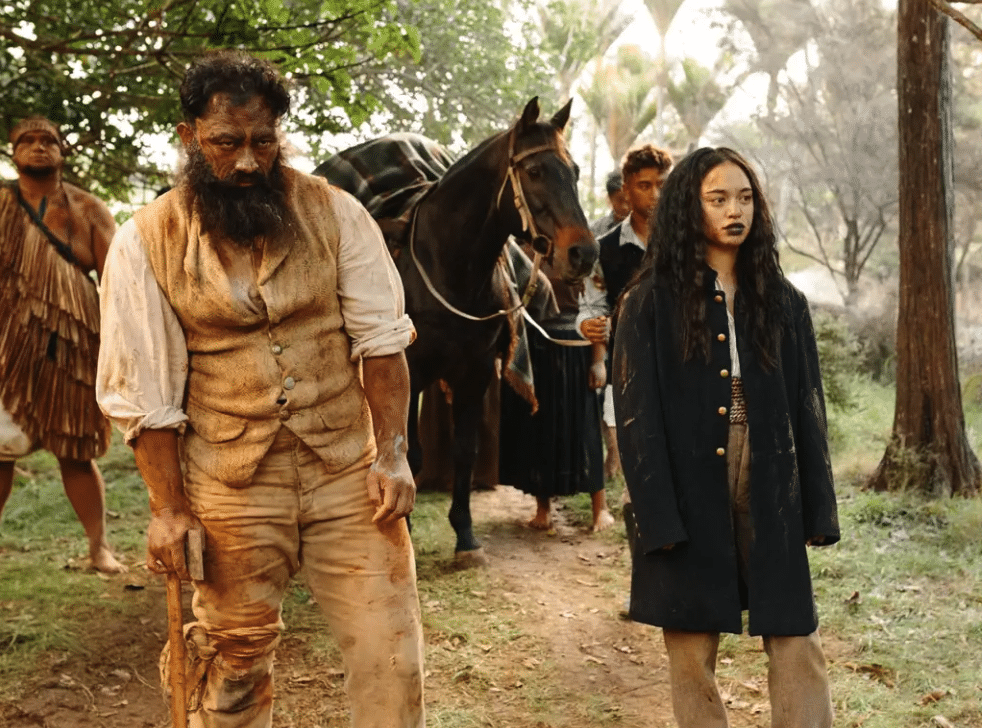As an Aboriginal person growing up in this country, there have been pivotal moments where I’ve felt something within myself shift because of what I’ve seen on a screen.
Time and again this ‘something’ felt deeply linked to my identity and place in this world, in ways I couldn’t always articulate. My earliest memory of such a shift was watching BabaKiueria (1986) and listening to my parents’ hysterical laughter fill our loungeroom. Much of the satire went over my head, but I remember laughing along with them and being filled with a kind of bubbling joy.
Looking back, I now recognise that much of my early identity had been shrouded by sombre portrayals of Aboriginal people in media. Watching BabaKiueria was the first time I’d clearly connected comedy, laughter, and play to my experience of what it meant to be Aboriginal.
Another moment came when my family and I were extras in Wesley Enoch’s short film Grace (1998). I was eight and had never contemplated the making of a film before. While Grace was definitely not a comedy, a shift occurred as a result of seeing my own family in front of a camera.
It was powerful to realise we too could play a part in our own on-screen representation. Observing a force like Wesley behind the camera was also pretty seismic. While my kid-brain wasn’t fully conscious of it at the time, little cogs had started to turn – eventually whirring into an ever-curious appetite for what’s possible when First Nations filmmakers hold sovereignty over our stories. I grew hungry for those moments of authentic representation; to be seen for the diversity, complexity and depth of our lived experiences.
First Nations excellence
Fast-forward through 25 years of on-screen First Nations excellence, and we have been gifted with We Are Still Here: a multi-genre anthology that continues to shift the dial on what is possible. Eight short films – Lured, Woke, Te Puuru, The Uniform, Grog Shop, Rebel Art, Blankets and The Bull and the RuRu – were originally written in response to an initiative calling for First Nations filmmakers to address the 250-year anniversary of Captain Cook’s circumnavigation of the Pacific region.
Filmmakers Beck Cole, Chantelle Burgoyne, Dena Curtis, Richard Curtis, Mario Gaoa, Danielle MacLean, Miki Magasiva, Renae Maihi, Samuel Paynter, Tiraroa Reweti, Tracey Rigney and Tim Worrall answered this call with a chorus of resistance, survival, loss and hope. Thematically linked with a clear sense of purpose, We Are Still Here stands as a memorable work of political film activism.
Read: We Are Still Here filmmaker Beck Cole: ‘It’s incredibly authentic’
The most striking thing about this film is how it interweaves the shorts, shifting back and forth between timelines and narratives. In doing so, the film embraces a circular concept of time and the interconnectedness of First Nations experiences in a way I’ve not previously seen on-screen.
In addition to directing Grog Shop, Beck Cole undertook the enormous task of weaving all eight shorts into one harmonised piece. The result is remarkably effortless to engage with; it’s never a struggle to remember what happened in an earlier scene or experience the complete emotional arc of a story. That in itself is an incredible feat for a film such as this.
Give me more
Some shorts left me wanting more in the best way. In particular, Tim Worrall and Richard Curtis’ Te Puuru feels like it’s just waiting to be expanded into a sprawling coming-of-age tale of family, resistance and the immeasurable cost of war. Similarly, Renae Maihi’s The Bull & The RuRu, set during the Springbok Tour protests of 1981, presents a world and characters so rich and full it’s difficult to leave behind.
Other shorts, such as Samuel Nuggin-Paynter and Beck Coles’ Grog Shop and Miki Magasiva and Mario Gaoa’s The Uniform, beautifully balance heavy themes with sparkling breaths of humour.
While Tiraroa Reweti and Chantelle Burgoyne’s Blankets conjures a powerful image of First Nations youth stepping fearlessly into the future, it is ultimately Grog Shop that leaves us with the lightness of heart through which we can move forward. It’s in these lighter notes that the experience of watching We Are Still Here, in all its rousing political commentary and earnest reflection, feels like a journey of healing.
Diversity and nuance
Just as BabaKiueria and my parents’ laughter shifted something in me as a child, the diversity and nuance of First Nations representation in We Are Still Here will no doubt create its own seismic shifts.
I was lucky enough to first see it at a Q&A session packed with an eager and appreciative audience, many of whom were First Nations. Listening to others share their passionate insights and interpretations of the film, embraced in a sense of community and shared experience that only existed because We Are Still Here created space for it, sparked another kind of bubbling joy …
I’m grateful this film exists, grateful that anthologies can provide platforms for multiple underrepresented voices and grateful the filmmakers were able to exercise sovereignty in moulding We Are Still Here into something that feels authentic and new.
Perhaps unsurprisingly, I have also ended up a filmmaker and am indebted to those who continue to pave the wave forward. Similar to Clarence Ryan’s character swaggering away from the Grog Shop elated and with a cheeky grin, I left the cinema with a sense of forward momentum and excitement for the shifts that will continue to come.
We Are Still Here is in cinemas now.





